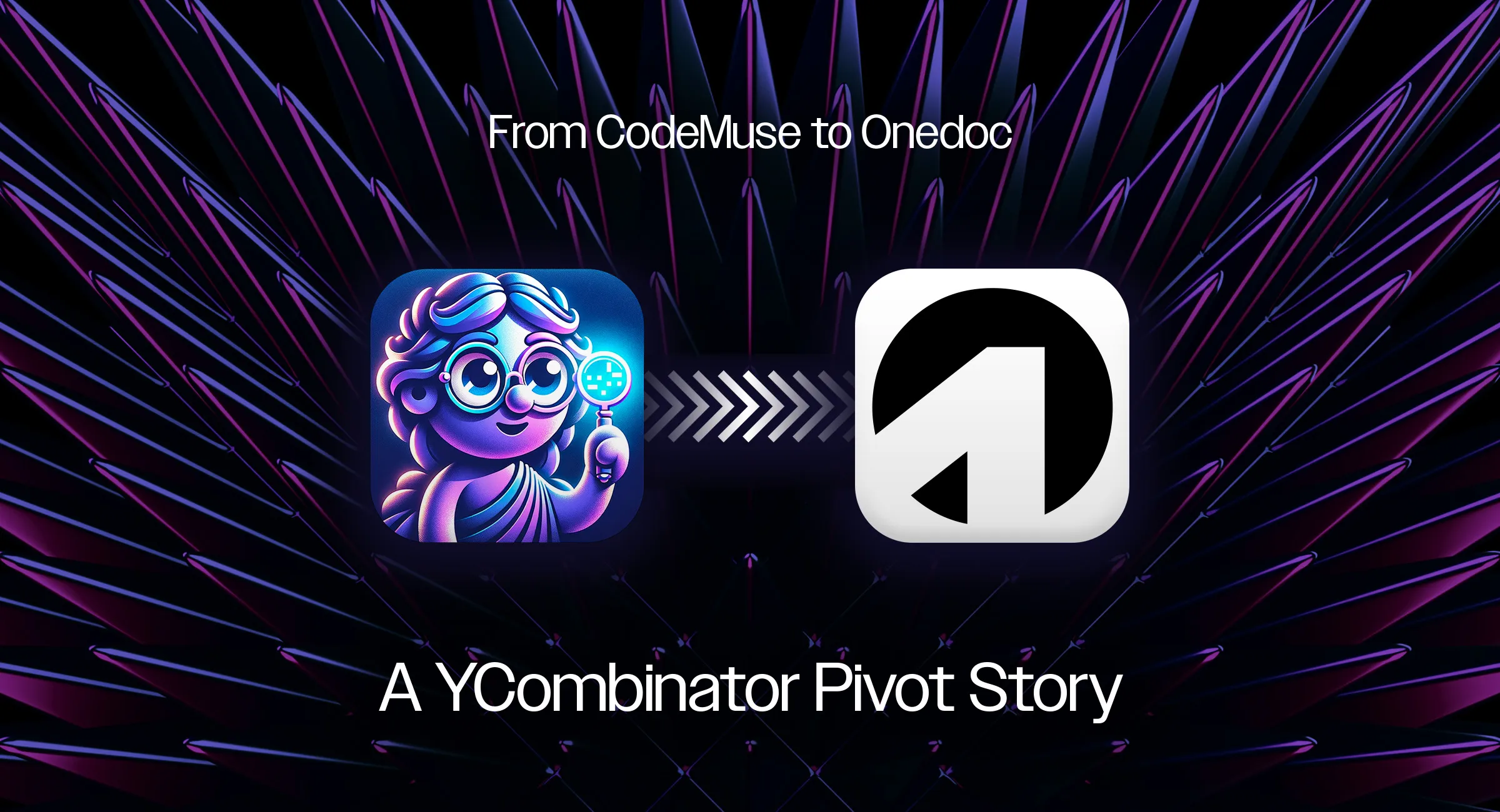
From AI Coding to Document Generation - A YC Pivot Story
Friday, February 9, 2024
On Tuesday, January 23rd 2024, we launched Fileforge on the YCombinator private forum. 5 weeks prior to that, we had been doing the same thing with CodeMuse. This is the story of how we pivoted from AI coding to document generation and the lessons we learned along the way.
Our start with CodeMuse
The three of us, Pierre, Auguste and I, had been working for our own software consulting company for a few years. As projects would come and go, we would often scale our team up and down. Freelancers and tech agencies would make it very easy to find developers, but we would often find ourselves in a situation where we would have to spend a lot of time onboarding them.
With the recent advances in AI and our own experience in software development, we thought we could build a tool that would help us onboard new developers faster. Combining the deeply structured nature of code with the latest LLMs, there was a lot of potential for a tool that could generate code from natural language descriptions.
Applying to YCombinator
We started working on CodeMuse in October 2023. We were able to get a simple search prototype within a few days. A bit out of the blue, we decided to apply to YCombinator. We thought the application process would force us to synthesize our thoughts and get a better understanding of what we were trying to build.
It turns out that our team and product resonated with the YC partners. We were invited to interview and were accepted into the Winter 2024 batch. We were thrilled, but also unsure about the reality of our product. At that point, we only had a handful of curious users, without retention let alone revenue.
On December 11th 2023, we launched CodeMuse on the YC Bookface. While the launch itself didn’t get much traction, we had a sudden influx of users.
When we noticed things were wrong
From the beginning of the application process, CodeMuse’s core value proposition had been questioned. It seemed that the combination of the market saturation of code generation tools and the lack of a proper product to go along our VSCode extension would be a problem.
By the end of December, we had a hundred signed up users, but none of them were actively using the product. We had already shipped integrations with Python and TypeScript to grow our target audience, but it had made no difference.
AI Coding challenges
It was time for a retrospective. We had been working on CodeMuse for 3 months and we had learned a lot. We had built a VSCode extension that integrated with a few languages. We had contributed to multiple open-source projects for code search and semantics.
Here were our key takeaways:
- AI Value - The value of AI in coding was clear. And combined with a good semantic understanding of code, we were able to provide extremely good results without overly relying on complex models. This meant that you could run local services without the need for a cloud-based API.
- Tech Matrix - The tech matrix was a big challenge. We had to support multiple code editors, multiple languages, and multiple platforms. This would make the onboarding experience very error-prone and time-consuming. Reflecting on what others such as Codium, SourceGraph or TabNine had done, we realized that we were not the only ones facing this challenge, even with larger engineering teams.
- Market Saturation - The market was saturated. There already were a lot of code generation tools. We had to find a way to differentiate ourselves, but still offer enough of the same features to be competitive.
- Audience - There is something special about the audience of developers. They are very opinionated and have high expectations. What’s more, they are willing (and good) at building their own tooling. It also meant that they would try the tool on something they knew extremely well, and would be very critical of the results. In retrospect, talking to larger teams and companies would have been the only viable approach to get a product-market fit.
During the batch retreat in January, we had a lot of time to connect with our peers in the same space, and quickly noticed that these challenges were widely shared. Without other input and given the market risk, we had to pivot.
Pivoting into Fileforge
After a short transgression into the real estate market, we decided to pivot into document generation. At our previous venture, we had experienced many problems revolving around PDF generation that led me to build a small internal tool to generate them from React components. We had presented this idea during our application interview, but hadn’t thought much of it since then.
After talking with Pete Koomen, our group partner, we realized that the PDF generation process still left a lot to be desired although it was a critical part of many businesses. With a much less saturated market and bloated competitors, we decided to pivot into Fileforge.
Launch quickly, get feedback
We had a lot of work to do to build our prototype, and we didn’t want to spend our time without getting feedback. We decided to launch a simple landing page with a waitlist and a few screenshots and code snippets taken from our prototype. We then launched on the YC Bookface, and got an overwhelming response.
Within a few days, we had 50 signups and a few dozen people asking for a demo. Some of them were even asking to bypass the waitlist. We now had to build the product.
